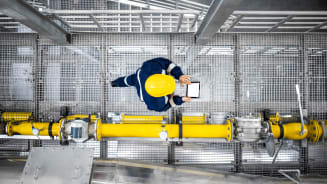Getting Ahead of Risk
With many contractors operating on tight profit margins, insurance products that provide certainty of claim payment and liquidity upon a loss occurrence are key. A risk management and risk transfer strategy that prepares them for a volatile environment will likewise be critical.
Contractual review is an important component of getting ahead. At the outset of a project, contractors should work with partners who understand the project, from location to associated risks. They should examine the contract method to see what risks are assigned to the contractor compared to other stakeholders and identify if a risk could be transferred to the insurance market.
Key contract issues include:
- Scope creep
- Delay and disruption
- Payment disputes
- Design and specification issues
- Health and safety risks
- Force majeure events
- Indemnification clauses
“Collaborative or alliancing type projects are being discussed in EMEA with more traction in the UK. Risk is shared among project stakeholders with a ‘no blame’ approach,” says Jon Chapman, Aon’s Construction and Infrastructure practice leader for EMEA. “However, these do bring about insurance issues, like identifying the trigger on a professional indemnity policy.”
As part of the risk transfer process, contractors and other construction stakeholders are also exploring tools to identify potential near- and long-term risks, such as the climate’s effect on their projects. Advanced catastrophe and climate models can help the industry anticipate and address the threats posed by natural disasters and climate change. Parametric insurance can also help protect against climate and catastrophe-related risks, offering contractors and building owners agility, efficiency and flexibility in the face of growing extreme heat conditions that have escalated risks, delays and costs for the construction industry in EMEA.

























































































































































































































































































































































